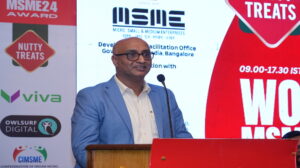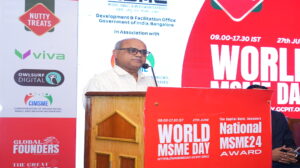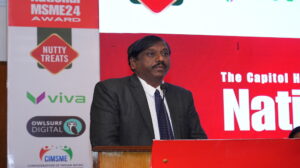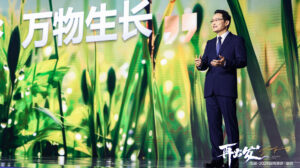Sensors And Sensibility: Digital Technology Keeps Pipelines Healthy At The World’s Largest Refinery

For the world’s largest facility of its kind, Reliance Industries’ oil refinery is surprisingly hard to find. Built on the vast alluvial plains surrounding Jamnagar, a town in the northwestern Indian state of Gujarat, the refinery is flanked by thick mango groves, tree-lined private highways and a pristine company town called Reliance Greens that holds homes, parks, schools and other facilities for some 2,500 employees and their families. The massive industrial monument only slowly emerges from behind the green curtain.
Stretching over an area larger than half of Manhattan, the plant holds some 4,000 kilometers of pipes that crisscross the dun-colored ground like a giant cardiovascular system. The pipes connect a forest of spindly oil-processing towers to hulking storage tanks and other outsize equipment capable of processing more than a million barrels of crude each day.
These steel pipelines are the facility’s most critical component. Many of them are insulated with glass wool covered with aluminum sheet metal. When water seeps in between the seams — say, during a monsoon — it can trigger corrosion that eventually can cause the pipe to leak. Such failures, which can cost refineries significantly in terms of downtime and repairs, could be avoided if only service crews could catch the corrosion early. “It doesn’t follow a pattern,” says Reliance’s Anand Haridas, who runs the unit at the refinery responsible for hunting down corroded pipes and replacing them. “Everybody in the industry is having this challenge, and there is constant endeavor to improve the way they detect corrosion.”
That’s why Manoharan Venugopal, senior engineer at GE’s India Technology Center — located some 800 miles southeast in the country’s tech hub, Bangalore — has been making a pilgrimage here since 2012. He and his team developed a suite of software and sensors that allows engineers like Haridas to keep better tabs on their pipes.
The team has installed 20 sensors to monitor 2.5 kilometers of pipes at the refinery, and has recently received permission from Reliance to increase the test project to 50 sensors. The design allows the GE team to detect water in the insulation and direct maintenance crews to spots the technology deems most likely to corrode. “Today the state of the art of detection is statistics,” Venugopal says. “Refineries estimate the probability of corrosion in the system and replace as much as a quarter of their pipes every year. We think we could be more surgical.”

Above: Manoharan Venugopal and his team developed a suite of software and sensors that allows Reliance Industries to keep better tabs on their pipes. The team has installed 20 sensors to monitor 2.5 kilometers of pipes at the Jamangar refinery, the world’s largest, and has recently received permission from Reliance to increase the test project to 50 sensors. Top: The refinery, stretching over an area larger than half of Manhattan, is flanked by thick mango groves, tree-lined private highways and a pristine company town called Reliance Greens that holds homes, parks, schools and other facilities for some 2,500 employees and their families. Images credit: Tomas Kellner for GE Reports.
The solution is one of many new GE technologies that mix the company’s knowledge of engineering with software and data analytics. “When we cut ourselves, the brain immediately knows it because of the network of nerves connecting every part of our body to the brain,” says Vinay Jammu, technical leader for software and analytics at the GE Bangalore center. “We are trying to develop something similar for machines.”
The work is also a good illustration of how scientists at GE Global Research collaborate with customers from the private sector as well as the government to bring new ideas to market. “We are helping them solve their biggest problems,” says Alok Nanda, CEO of the India Technology Center. “The advantage is that we get the freedom to run experiments on the actual equipment. We now have technicians on the ground in Jamnagar who collect measurements from the test site every day. It’s almost like our extended lab.”
Venugopal is an expert in nondestructive testing, which involves using X-ray and other imaging technologies typically used in healthcare to inspect industrial parts. In 2012, when he was looking for new applications for these technologies, he decided to call a maintenance manager he knew at Reliance and ask him about the biggest challenges he faced. Pipes were at the top of his list.
The refinery invited Venugopal for a visit, and he spent 15 days walking around the site, talking to engineers and maintenance crews and taking copious notes. “I thought that some of my engineering training would be applicable to their problem,” he says. “I wrote everything up in a report and sent it to them.”
His Reliance contact liked the work, and a few weeks later Venugopal received an email asking him to come back and present his pipe-monitoring idea to other managers. Soon Venugopal and his team started making the five-hour plane trip from Bangalore to Jamnagar’s tiny airport every few months to deploy and test their system. Cloaked in full-body suits, helmets, goggles and other safety gear, they’d head out into the blazing sun to install various iterations of sensors on the pipes, take measurements and analyze the data. “It was so hot and there was no shade, but nobody complained,” Venugopal says. “Everyone was so passionate about the project.”

“When we cut ourselves, the brain immediately knows it because of the network of nerves connecting every part of our body to the brain,” says Vinay Jammu, technical leader for software and analytics at the GE Bangalore center. “We are trying to develop something similar for machines.” Image credit: Tomas Kellner for GE Reports.
For the first three years, work progressed in fits and starts as the team labored to build the right sensors and eliminate noise from their signals. They had to filter out strange echoes generated by mesh wire holding the glass wool in place, for example, and resolve spikes in the signal caused by metal struts holding the pipes above the ground. The project picked up speed in 2015, when Reliance asked GE to install 20 sensors on its pipes, which include both straight segments and tricky elbows whose twists and bends are more prone to corrosion.
On a recent afternoon, a pair of GE service engineers based at the refinery visited two sensor sites and took measurements. Donning color-coded protective gear — safety is a top priority at the refinery, and all visitors must pass a multiple-choice safety test before they’re allowed on the premises — they carried a silver, rectangular explosion-proof briefcase holding a vector network analyzer, a device that generates and decodes the microwave signal traveling through the insulation. They also had a coil of black coaxial cable that connected the hardware to the sensors on the pipe.
The microwave pulse travels for 30 meters through the insulation in each direction from the sensor to an antenna, which reflects it back in a predictable way unless it runs into something that’s not supposed to be there, like water. The engineers upload the information to a portable data storage via a USB cable. “If we see water constantly for a period of time in a certain location, we alert the maintenance team,” Venugopal says. “They can go to the location and take the water out to prevent corrosion.”
This daily routine sounds simple, but the team is constantly working on improving its algorithms. Ultimately, it wants to collect enough high-quality data to develop a digital twin of the pipes — a virtual representation of the network that will allow it not only to pinpoint locations of likely corrosion, but also to model the actual thickness of the pipes. “In the future, we could have a living, 3D model of the most critical 100 kilometers of the pipes,” says Debasish Mishra, technology manager at the Bangalore center.
That model would combine external data with information about the liquids flowing through the pipes, plus maintenance and meteorological information from past inspections. “We will be able to start tracking and learning,” Debasish says. “We will be able to see that every time we have a severe monsoon coming from the northeast, we get more water ingestion points in certain areas.”
Reliance is now funding more tests. Haridas says that the current probabilistic approach allows his crew to detect corrosion in 30 to 40 percent of the areas they select to inspect. “We believe that with this new technology in place, we can push positive detection to 60 or 70 percent. But we still have a long way to go. In the long run, I don’t want to look for water — I want to look for corrosion.”






